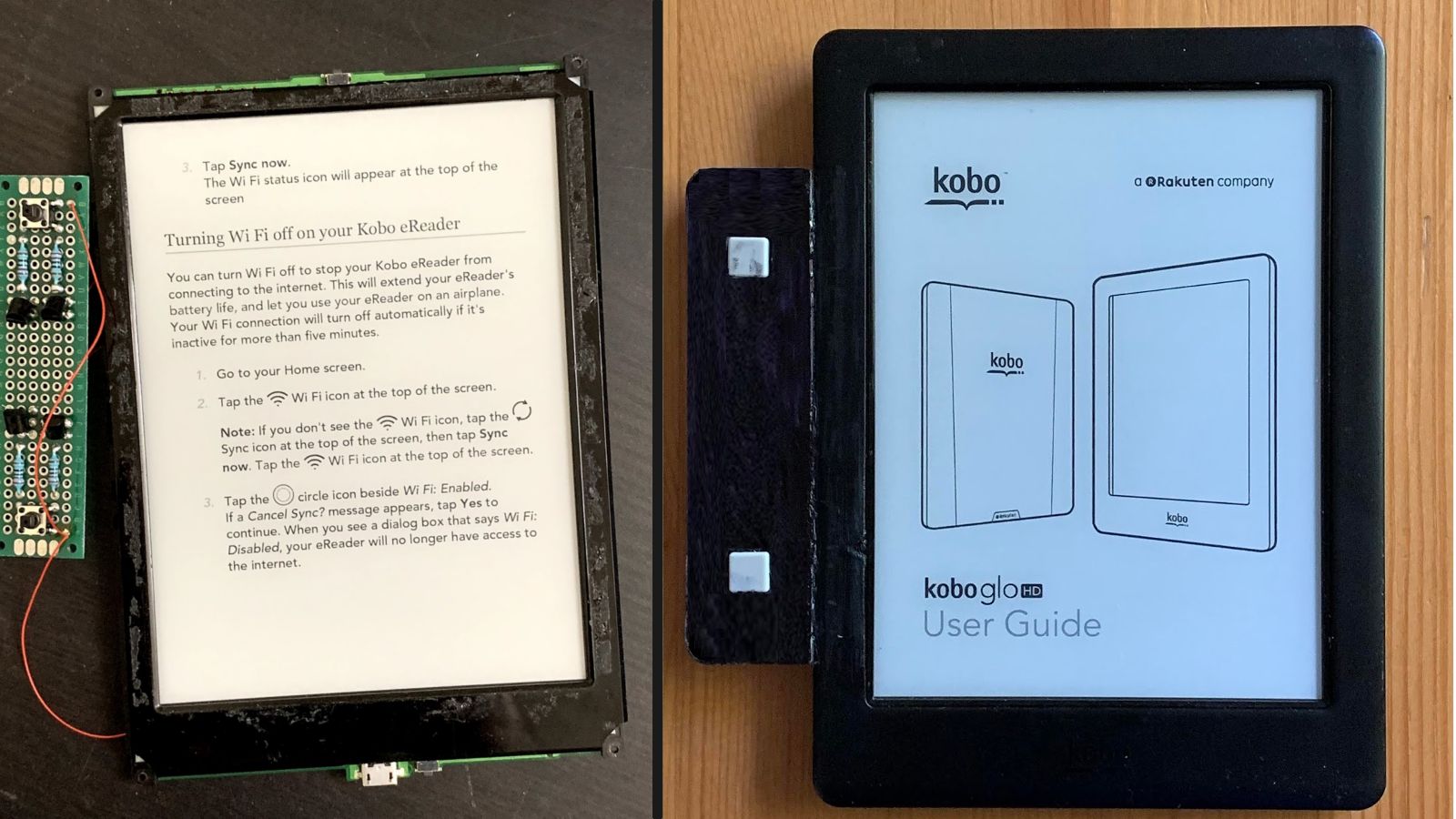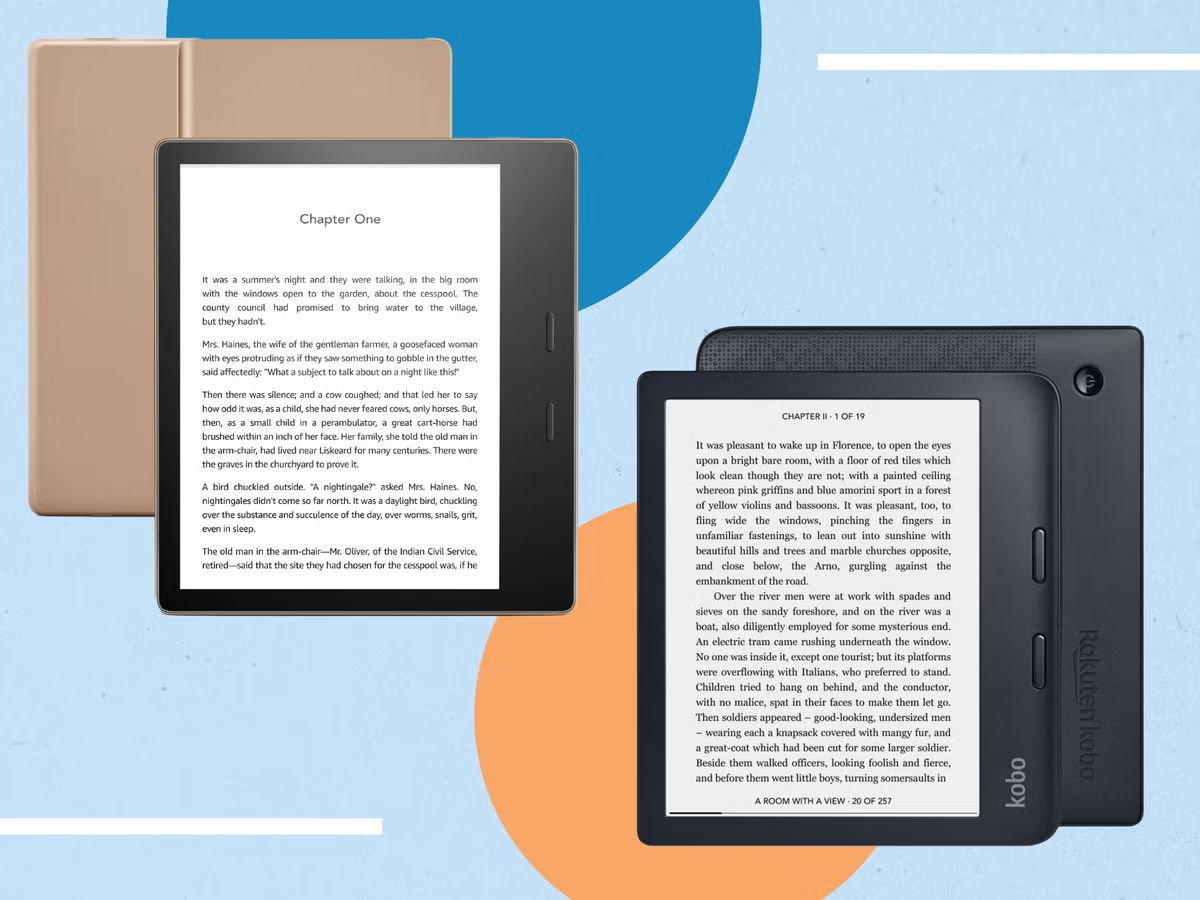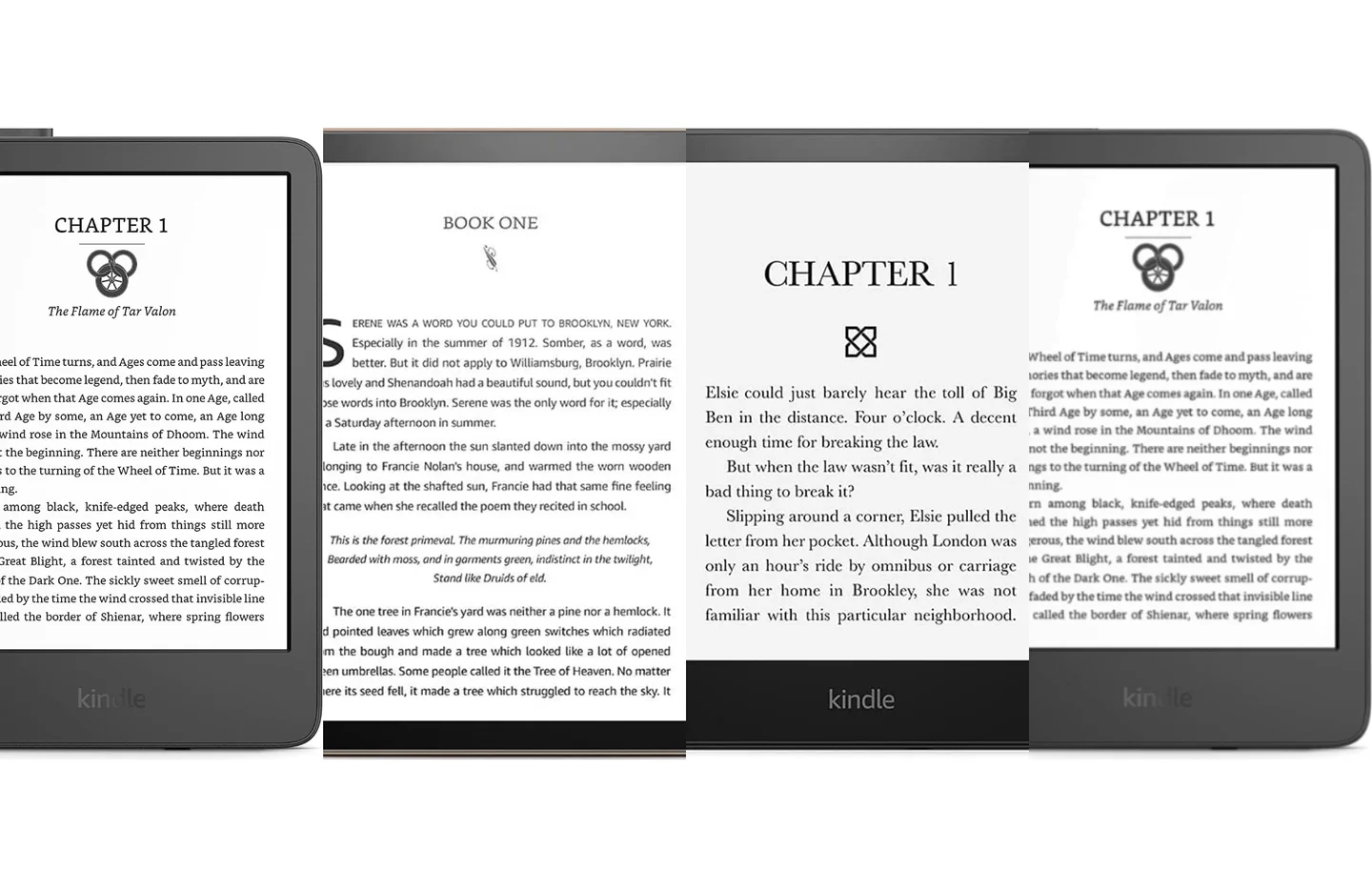Introduction
Welcome to the world of eBooks! As technology continues to advance, eBooks have become an increasingly popular medium for sharing and consuming content. With their convenience, portability, and interactive features, eBooks offer a unique reading experience that traditional print books cannot match. If you’re looking to create your own eBook with turning pages, you’ve come to the right place.
In this article, we will guide you through the process of making an eBook with turning pages, from start to finish. We’ll show you how to choose the right eBook creation tool, gather content for your eBook, design it to make it visually appealing, add interactive elements to enhance reader engagement, and finally, how to test and publish your eBook.
Whether you’re a writer looking to self-publish your work, a marketer looking to create a digital brochure or catalog for your business, or simply someone who wants to share their knowledge or creativity with the world, creating an eBook with turning pages is a fantastic way to showcase your content in a visually appealing and interactive format.
But why choose an eBook with turning pages? Quite simply, it replicates the experience of flipping through the pages of a physical book, creating a sense of familiarity and engagement for the reader. This interactive feature adds an extra dimension to the reading experience, making it more immersive and enjoyable.
With that said, let’s dive into the process of creating an eBook with turning pages. But before we do, it’s important to choose the right eBook creation tool that will best suit your needs. In the next section, we will explore the different options available and help you make an informed decision.
Choosing an eBook Creation Tool
When it comes to creating an eBook with turning pages, choosing the right eBook creation tool is crucial. There are several options available, each with its own features, pricing plans, and ease of use. Let’s explore some of the popular choices:
- Adobe InDesign: If you’re looking for a professional and robust eBook creation tool, Adobe InDesign is a top choice. It offers a wide range of design capabilities, allowing you to create stunning eBooks with turning pages. However, it does require a bit of a learning curve and comes with a higher price tag.
- FlipHTML5: FlipHTML5 is a user-friendly platform that specializes in creating interactive eBooks with page-turning effects. It offers a variety of customizable templates, multimedia integration, and the ability to publish your eBook online. It’s a great option for beginners and those looking for a straightforward and affordable solution.
- Calibre: Calibre is a free, open-source eBook creation tool that provides basic features for converting and formatting eBooks. While it may not offer as many design options as other tools, it’s a great choice for those on a tight budget or looking for a simple and straightforward solution.
Before making a decision, consider factors such as your budget, design requirements, technical skills, and the specific features you need for your eBook. Additionally, it’s important to read reviews, compare pricing plans, and even try out some free trials to get a feel for each tool’s capabilities.
Once you’ve chosen an eBook creation tool, you’re ready to move on to the next step: gathering content for your eBook. Whether you’re starting from scratch or repurposing existing content, this stage is crucial in creating a high-quality eBook that engages and delights your readers. We’ll discuss this in detail in the next section.
Gathering Content for Your eBook
Now that you have chosen an eBook creation tool, it’s time to gather the content for your eBook. The content you include will determine the value and relevance of your eBook to your target audience. Here are some steps to help you gather the right content:
- Define your target audience: Before you start gathering content, it’s important to have a clear understanding of your target audience. Consider their demographics, interests, and needs. This will help you tailor your content to their preferences and make your eBook more appealing and valuable.
- Outline your eBook: Create an outline or table of contents for your eBook. This will serve as a roadmap and help you organize your content effectively. Start with broad topics and break them down into smaller, more specific sections.
- Curate existing content: Look for any existing content that you can repurpose for your eBook. This could include blog posts, articles, case studies, or whitepapers. Make sure to update and optimize the content to fit the eBook format and provide additional value to your readers.
- Research and gather new content: If you need to create new content, conduct thorough research to gather relevant information, facts, and statistics. Use reliable sources such as books, research papers, industry reports, and reputable websites to ensure the accuracy and credibility of your content.
- Create engaging visuals: Visual elements such as images, infographics, and charts can enhance the overall appeal of your eBook. Create or gather visually appealing graphics that support your content and make it easier for readers to grasp complex concepts.
- Add multimedia elements: Consider incorporating multimedia elements like videos, audio clips, or interactive slideshows to make your eBook more interactive and engaging. These elements can provide a dynamic and interactive experience for your readers.
- Proofread and edit: Before finalizing your content, make sure to proofread and edit it thoroughly. Check for grammar and spelling errors, ensure consistency in formatting and style, and refine the content to make it concise and engaging.
Remember, the quality and relevance of your content are key factors in creating an impactful eBook. Take the time to gather and curate content that offers value and addresses the needs of your target audience. In the next section, we will explore the process of designing your eBook to make it visually appealing and user-friendly.
Designing Your eBook
Design plays a crucial role in creating an appealing and engaging eBook. A well-designed eBook not only enhances the reader experience but also reflects the professionalism and quality of your content. Here are some tips to help you design your eBook:
- Choose a visually appealing layout: Select a clean and visually appealing layout that complements your content. Consider using consistent fonts, colors, and formatting throughout the eBook to create a cohesive and professional look.
- Utilize white space: Don’t overcrowd your eBook with too much text or images. Use ample white space to create a balanced and easy-to-read layout. This will improve readability and make your content more visually appealing.
- Use high-quality images and graphics: Incorporate high-resolution images and graphics that enhance your content. Ensure that they are relevant to the topic and visually appealing. Be mindful of copyright restrictions and always provide proper attribution if necessary.
- Add engaging call-to-action (CTA) buttons: If you want your readers to take specific actions, such as signing up for a newsletter or visiting your website, add engaging CTA buttons throughout the eBook. Design them to stand out and entice readers to click.
- Include navigational elements: Make it easy for readers to navigate through your eBook by including a table of contents, page numbers, and clickable links. This will improve the overall user experience and help readers find the information they’re looking for quickly.
- Create interactive elements: Enhance reader engagement by incorporating interactive elements such as quizzes, surveys, or clickable hotspots. These interactive features can make your eBook more dynamic and enjoyable to explore.
- Optimize for different devices: Keep in mind that readers may access your eBook on various devices, including smartphones, tablets, and e-readers. Ensure that your design is responsive and adapts well to different screen sizes for a seamless reading experience.
- Preview and test: Before finalizing your design, preview your eBook on different devices to ensure that it looks and functions as intended. Test all interactive elements and links to confirm they work properly.
By paying attention to the design aspects of your eBook, you can create a visually appealing and user-friendly experience for your readers. In the next section, we will explore how to add interactive elements to make your eBook more engaging and interactive.
Adding Interactive Elements
Now that you’ve designed your eBook, it’s time to take it to the next level by adding interactive elements. Adding interactivity not only enhances reader engagement but also makes your eBook more memorable and enjoyable. Here are some interactive elements you can incorporate:
- Page Turn Animation: The signature feature of an eBook with turning pages is the page turn animation. Ensure that your eBook creation tool supports this feature, as it replicates the experience of flipping through the pages of a physical book.
- Embedded Multimedia: Make your eBook come alive by embedding multimedia elements such as videos, audio recordings, or interactive slideshows. These elements can provide additional context, explanations, or demonstrations to enhance the reader’s understanding and engagement.
- Interactive Images and Infographics: Turn static images and infographics into interactive elements by adding clickable links or hotspots. This allows readers to explore more information or view related content with just a click, enhancing their learning experience.
- Quizzes and Assessments: Test your readers’ knowledge and engage them with interactive quizzes and assessments. This can be a fun and interactive way to reinforce key concepts and encourage active participation from your audience.
- Clickable Table of Contents: Make it easy for readers to navigate through your eBook by making the table of contents clickable. This allows them to jump to specific sections or topics with a simple click, improving the overall user experience.
- Interactive Charts and Graphs: Replace static charts and graphs with interactive ones that allow readers to hover over data points or adjust parameters. This provides readers with a more dynamic and hands-on exploration of data and enhances their understanding.
- Embedded Social Media Feeds: Connect your eBook to social media by embedding live feeds or links to your social media profiles. This enables readers to easily share your eBook with their networks or follow you for more updates and content.
- Clickable References and Citations: Make it convenient for readers to explore your sources or references by adding clickable links to external websites or documents. This helps to validate your information and allows readers to delve deeper into the topic if they wish.
Adding interactive elements to your eBook not only enhances reader engagement but also provides a unique and immersive reading experience. It allows you to go beyond mere text and static visuals, making your eBook interactive and memorable. In the next section, we will discuss how to test and publish your eBook to ensure a seamless reading experience.
Testing and Publishing Your eBook
Before releasing your eBook to the world, it’s crucial to thoroughly test it and ensure a seamless reading experience for your audience. Here are the steps to follow when testing and publishing your eBook:
- Preview your eBook: Use the preview feature in your eBook creation tool to review your eBook and double-check the design, layout, and interactive elements. Make sure everything is functioning as intended and there are no errors or glitches.
- Test on multiple devices: Ensure that your eBook displays correctly and functions properly on different devices such as smartphones, tablets, e-readers, and computers. Test it on various platforms and operating systems to ensure a consistent experience for all readers.
- Proofread the content: Give your eBook a final proofreading to catch any remaining typos, grammatical errors, or inconsistencies. It’s important to present your readers with high-quality and error-free content.
- Validate the HTML encoding: Check the HTML of your eBook to ensure that it is valid and properly encoded. This will ensure compatibility across various devices and help prevent any technical issues that may arise.
- Create a compelling cover: Design an eye-catching and professional cover for your eBook. The cover is the first thing readers will see, so make sure it accurately represents the content and entices them to click and explore further.
- Choose the right file format: Consider the file format options for your eBook, such as EPUB, MOBI, or PDF. Research the compatibility of each format with different devices and platforms, and choose the one that best suits your target audience.
- Decide on the publishing platform: Determine where you’ll be publishing your eBook. You can choose to self-publish on platforms like Amazon Kindle Direct Publishing or use eBook distribution services to reach a wider audience.
- Prepare metadata and descriptions: Write an engaging book description and determine relevant metadata such as title, subtitle, author name, and keywords. These details are essential for discoverability and attracting potential readers.
- Publish and promote your eBook: Finally, publish your eBook on your chosen platform and begin promoting it to your target audience. Leverage social media, email marketing, your website, or other promotional tactics to spread the word about your eBook and attract readers.
Testing and publishing your eBook is an exciting step in sharing your content with the world. By conducting thorough testing and ensuring a seamless reading experience, you can provide a polished and engaging eBook to your audience. In the next section, we will wrap up our guide on creating an eBook with turning pages.
Conclusion
Congratulations, you’ve reached the end of our guide on creating an eBook with turning pages. We’ve covered the essential steps involved in bringing your eBook to life, from choosing the right eBook creation tool to testing and publishing your masterpiece. Let’s recap what we’ve learned:
Firstly, choosing the right eBook creation tool is crucial. Consider your budget, design requirements, and ease of use when making your selection.
Next, gathering high-quality content that is tailored to your target audience is key. Remember to curate existing content, conduct thorough research, and add engaging visuals to enhance your eBook.
Designing your eBook plays a significant role in capturing readers’ attention. Utilize visually appealing layouts, sufficient white space, high-quality images, and interactive elements to make your eBook visually stunning.
Adding interactive elements takes your eBook to the next level. Incorporate page turn animations, embedded multimedia, interactive images, quizzes, and more to create an engaging reading experience.
Before publishing, thoroughly test your eBook on multiple devices, proofread the content, validate the HTML encoding, and create an enticing cover. Choose the appropriate file format and select a suitable publishing platform to reach your target audience.
Finally, promote your eBook to attract readers and drive engagement. Utilize various marketing channels and tactics to spread the word about your eBook and connect with your audience.
Creating an eBook with turning pages allows you to showcase your content in an interactive and visually appealing way while providing an engaging reading experience. Whether you’re a writer, marketer, or someone with valuable knowledge to share, an eBook can be an effective tool to reach your audience.
So, what are you waiting for? Start the journey of creating your own eBook with turning pages and bring your ideas to life. Good luck!

























